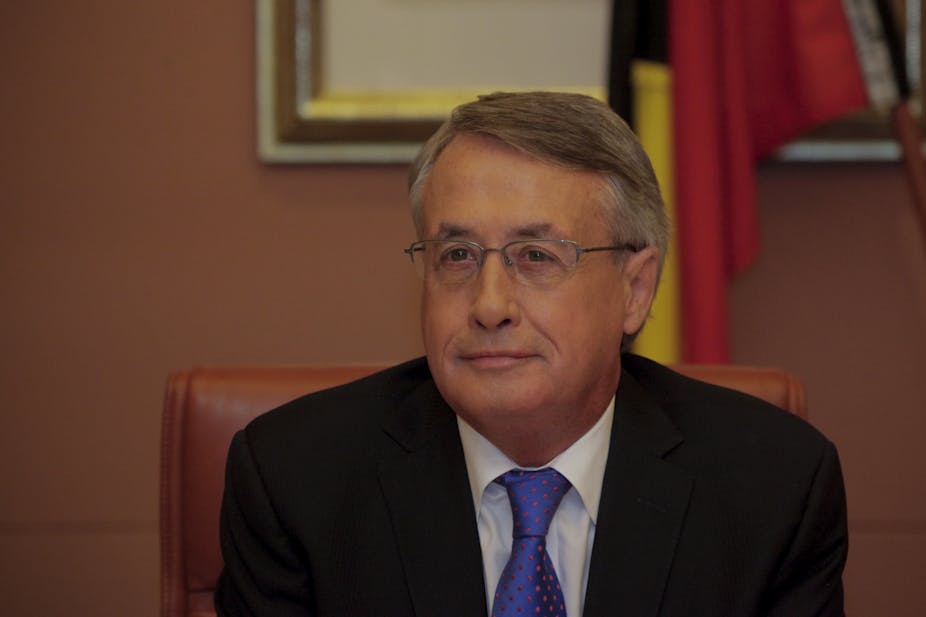Treasurer Wayne Swan has delivered a budget with a A$19.4 billion deficit this financial year, falling only to $18 billion in 2013-14.
The government would aim to bring the budget back to “balance” – less than $1 billion in the black – in 2015-16, and have a modest $6.6 billion surplus in 2016-17.
The government’s unconventional pre-election budget - which includes a rise in the Medicare levy and a fresh crack down on “middle class welfare” - contains $43 billion of savings through the forward estimates and funding for the key schools and disability programs.
It foreshadows a growing economy but a small rise in unemployment, to 5.75%, next financial year.
Swan said the government had chosen to support “jobs and growth in an uncertain world,” rather than cutting to the bone.
He said the budget would “chart a pathway to surplus through responsible savings.”
“To those who would take us down the European road of savage austerity, I say the social destruction that comes from cutting too much, too hard, too fast is not the Australian way,” he told parliament.
The government will scrap the Baby Bonus from next year, while providing new support for the families of newborns through the Family Tax Benefit A.
In another tightening, the existing “pause” of the indexation of the family payments system for upper income test limits will continue. These measures are in addition to the earlier announced cancellation of increases to the Family Tax Benefit that were due in July.
The total changes to the family payments are worth nearly $5 billion over the budget period.
In other cuts, a number of business tax loopholes will be closed and several areas of health spending will be tightened.
The positive themes of the budget were putting in place the national disability scheme and the Gonski school funding plan, as well as heavily investing in nation-building infrastructure.
“This budget will fully fund our share of DisabilityCare Australia, beyond the next decade,” Swan said. An increase in the Medicare levy from July 1 next year will part fund the scheme.
Swan also said the budget fully funded the government’s schools program over the next decade, “meaning we can return the budget to surplus without leaving our children an education deficit.”
On infrastructure, he said the government would continue its ambitious program “with a new $24 billion investment in the next wave of nation building.
"It’s critical to invest in both urban road and rail infrastructure,” he said.
The government was investing in “transformational public transport projects”, including Brisbane’s Cross River Rail and Melbourne Metro. “These projects will change the way these cities work and allow them to grow into the future.”
The government also announced $12.9 million to connect more local councils to the NBN and provide training for business and not-for-profit organisations in 20 regional NBN rollout sites.
Nearly $100 million will go to a new farm household allowance to support farmers in hardship, part of the national drought program reform, and there will be a new farm finance package to help farmers struggling with debt.
The government has loaded the weight of the savings it has identified into the later years of the forward estimates.
Swan said that challenging global conditions and the high dollar had put “huge pressure on the budget, leading to a reduction in expected tax receipts in more than $60 billion over the four years to 2015-16.”
The budget forecasts growth for this financial year of 3%, falling to 2.75% in 2013-14 before rising to 3% in 2014-15.
“Our nation’s outlook is bright and our economy is set to grow faster than most of the developed world,” Swan said, “By mid-2015 our economy will be 22% bigger than before the global financial crisis, outstripping every major advanced economy.”
He said the economy was undergoing an important transition. “Our nation’s largest resource investment boom is shifting to a boom in production and exports… as the resources boom enters its new phase, the economy is also transitioning to broader sources of economic growth.”
This brought opportunities, but the transition would not be seamless. He said despite the slight rise in unemployment, Australia would still have among the lowest unemployment rate in the developed world.
The budget revised its earlier forecast of the carbon price dramatically down, to around $12 a tonne in 2015, when it moves to a floating system and is linked to the European price. The budget says the second round of the tax cuts, which had been due in 2015, would be deferred until the carbon price was estimated to be about $25.40. This is currently projected to occur in 2018-19 it says.

